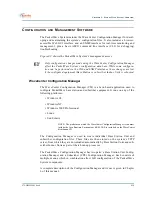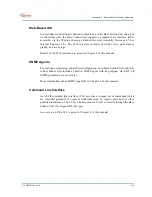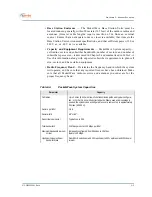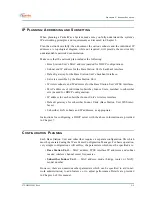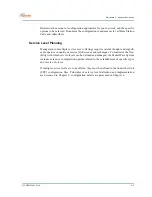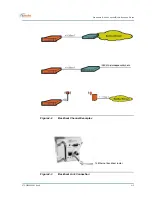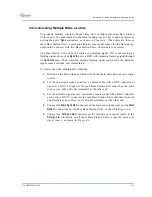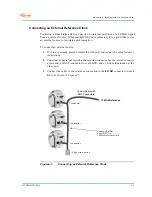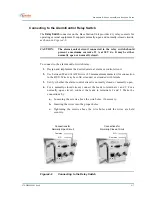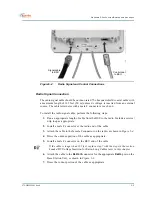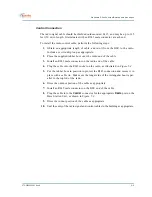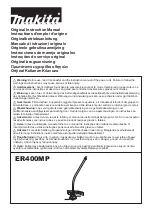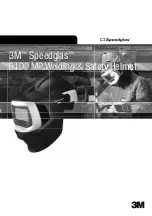
C
HA PTER
4. I
NSTA LLI NG
B
A SE
S
TATIO N
U
N ITS
4–4
070-20000340-01 Rev A
Interconnecting Multiple BSUs at a Site
To properly identify wireless channel time slots, multiple colocated Base Station
Units need to be synchronized to the same framing signal. This is done by intercon-
necting the units’
Sync
connectors, as shown in
Figure4-4
. When there are three or
more Base Station Units, a main and alternate sync signal source for the framing sig-
nal should be chosen; with two Base Station Units, no alternate is necessary.
Any Base Station Unit can be the source of a framing signal. If it is not receiving a
framing signal at one of its
Sync In
ports, a BSU will transmit a framing signal through
its
Sync Out
ports. Thus, when the primary framing signal source fails, the alternate
signal source can take over immediately.
To interconnect the multiple Base Stations:
1.
Determine the Base Stations which will be the main and alternate sync signal
sources.
2.
For the main sync signal, construct a coaxial cable with a BNC connector at
one end, a BNC T-connector for each Base Station Unit other than the main
sync source, and a 50-ohm terminator at the other end.
3.
For the alternate signal source, construct a coaxial cable with a BNC connector
at one end, a BNC T-connector for each Base Station Unit other than the main
and alternate sync sources, and a 50-ohm terminator at the other end.
4.
Connect the
Main Sync Out
connector on the main sync signal source to the
Main
Sync In
connectors on all other Base Station Units, as shown in
Figure 4-4
.
5.
Connect the
Alt Sync Out
connector on the alternate sync signal source to the
Alt Sync In
connectors on all other Base Station Units
except the main sync
signal source,
as shown in
Figure4-4
.


